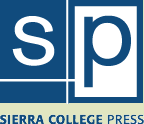The Legacy of Désiré Fricot
Our history is liberally sprinkled with fascinating characters. Some have been notorious, while most have been honorable. And then there are the few who make a difference. Such a person was Désiré Fricot, who left an invaluable legacy to the Sierra Nevada region and especially to Nevada County.
Désiré Fricot was born in Paris, France, in 1868, while his parents were visiting Europe. He was the son of Jules Nicolas Fricot, a prominent mining speculator who was influential in the early days of Nevada County mining. The Fricot family owned and operated a number of mines in Nevada and Calaveras County. The family also obtained real estate in San Francisco, and was active in French diplomatic and consular activities in California and Hawaii.
Désiré was educated in Paris at what is now the Sorbonne. He spoke five languages fluently: English, French, German, Spanish, and Italian. He completed his education as a mining engineer and chemist in San Francisco and then moved to Grass Valley.
Prospecting in Grass Valley
 With partner André Chavanne, Fricot prospected on the Independence claim in Grass Valley from 1893 to 1897. This claim was an extension of the Idaho-Maryland Mine properties.
With partner André Chavanne, Fricot prospected on the Independence claim in Grass Valley from 1893 to 1897. This claim was an extension of the Idaho-Maryland Mine properties.
It was during this period that Fricot took many photographs of the Grass Valley region, leaving an invaluable historic record of the era. Some of these images are reproduced here. Fricot also traveled the world and left an extensive collection of turn-of-the-century photographs of Central and Eastern Europe, India, Russia, China, Japan, Southeast Asia and Central America. The colorful Fricot often traveled with his family pet, a monkey named Biscrouch.
Désiré Fricot was also a translator of French language documents into English. His best known works were André Chavanne's The Burning of the Golden Gate in July 1862. The Impressions of a Survivor, André Chavanne (1940) and California Unveiled: A Translation of Treny's La Californie dévoilée (1944). These books are considered the best accounts of early French influence in California.
Fricot was involved in many activities
But Fricot was also involved in many other lasting efforts. Fricot was a principal in establishing water systems and agencies in the Sierra Nevada; he was a strong promoter of the Boy Scouts and was known as the “father” of the Boy Scout program in the Central Sierra; he was an ardent advocate of improved roads and was a dedicated proponent of the Mother Lode Highway, which came to be known as Highway 49; and he purchased property that was rebuilt into the Calaveras County History Museum in San Andreas.
Internationally, Fricot was a passionate supporter of the Allied cause during World War I. A friend of the French Premier Georges Clemenceau, Fricot went to France during the war and provided valuable assistance to the Allied war effort. In recognition, he was honored by membership in the French Legion of Honor.
Additionally, Désiré Fricot was a leader in the establishment of the Calaveras Big Trees as a protected state park. His significant contributions of time and money are recognized by a plaque within the North Grove of the park. Fricot established his homestead in Calaveras County on a remote hilltop knob that was six miles from his nearest neighbor. He called the estate Fricot City. Today, the property is utilized by the Rite of Passage program.
Désiré Fricot died in 1940. His contributions live on.
The famous British Prime Minister Winston Churchill once stated: “We make a living by what we get, we make a life by what we give.” If that is the standard, then Désiré Fricot had a very full life indeed.
View a gallery of his photos >>
